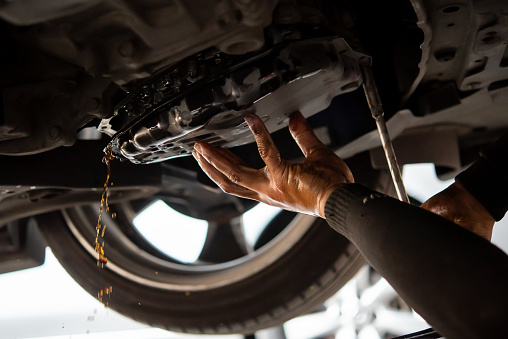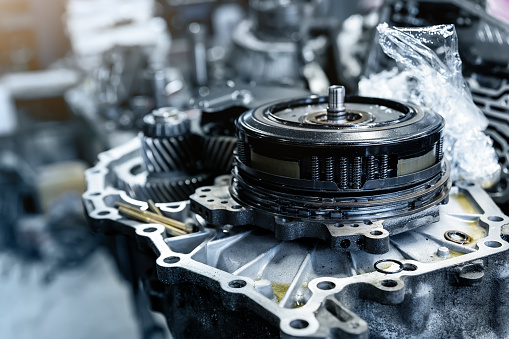December 13, 2024
Understanding Manual Transmission
Manual transmission may sound like confusing mechanic language. Whether you are an expert looking to do a manual transmission rebuild or are new to driving, brushing up on what is manual transmission and how it works is helpful. Anyone can learn to understand what a manual transmission is, how it operates, and the type of transmission that is best for them.
In this article, we’ll be going over the basics of the transmission, how manual transmission works, and comparing manual and automatic transmissions.
Transmission Basics
The transmission is a critical component in a vehicle that transmits power from the engine to the wheels. It allows the vehicle to change gears, ensuring that the engine operates efficiently at different speeds and under various driving conditions. Here’s a breakdown of the basics:
1. Function of a Transmission
- Power Transfer: The transmission takes power from the engine and transmits it to the drive wheels, enabling the car to move.
- Gear Ratio Adjustment: It adjusts the gear ratios to ensure the engine can work efficiently at various speeds. Lower gears provide more torque for acceleration, while higher gears reduce engine strain at cruising speeds.
2. Types of Transmissions
- Manual Transmission (MT): In a manual transmission, the driver uses a clutch pedal and gear shifter to manually change gears. It provides more control over the vehicle but requires more skill.
- Automatic Transmission (AT): An automatic transmission shifts gears on its own, based on the vehicle’s speed, load, and other factors. The driver simply selects “Drive” (D), and the system manages the gear changes.
- Continuously Variable Transmission (CVT): A CVT is a type of automatic transmission that provides an infinite number of gear ratios, offering smoother acceleration and better fuel efficiency.
- Dual-Clutch Transmission (DCT): Often referred to as a semi-automatic, the DCT has two clutches that allow for faster gear changes. It combines the convenience of an automatic with some of the efficiency of a manual.
3. Transmission Components
- Clutch (Manual): The clutch is used to disconnect the engine from the transmission when changing gears. It allows for smoother shifting.
- Torque Converter (Automatic): A torque converter is a type of fluid coupling that replaces the clutch in an automatic transmission. It allows the engine to continue running while the vehicle is stopped.
- Gears: Inside the transmission, a set of gears allows the vehicle to shift between different levels of power and speed. These gears can be either manual or automatic depending on the transmission type.
- Bands and Clutches (Automatic): These control the gear shifts in automatic transmissions by applying friction to various gears and shafts.
4. How it Works
- Manual Transmission: When the driver presses the clutch pedal, it disengages the engine from the transmission, allowing the driver to shift gears. Releasing the clutch pedal engages the engine back into the transmission.
- Automatic Transmission: When driving an automatic, the transmission shifts gears automatically, using hydraulic pressure, sensors, and solenoids. The torque converter allows the engine to idle and transfer power to the transmission when the vehicle is not moving.
5. Transmission Fluid
- Importance: Transmission fluid is essential for lubricating the internal components of the transmission, preventing overheating, and ensuring smooth shifting.
- Maintenance: Regularly checking and changing the transmission fluid (as per the manufacturer’s recommendations) is critical for transmission health.
6. Common Transmission Problems
- Slipping Gears: When the transmission unexpectedly changes gears or struggles to stay in gear.
- Delayed Shifting: Hesitation or roughness when changing gears, often a sign of low fluid or internal wear.
- Overheating: Excessive heat can damage the transmission. Regular maintenance and fluid checks help prevent this.
- Strange Noises: Grinding, whining, or clunking sounds may indicate mechanical issues within the transmission.
7. Transmission Maintenance Tips
- Regular Fluid Checks: Ensure the transmission fluid is at the proper level and in good condition. Old, dirty fluid can cause shifting problems.
- Scheduled Maintenance: Follow your vehicle’s manual for regular transmission service intervals. Some vehicles need a fluid change every 30,000 to 60,000 miles.
- Proper Driving Habits: Avoid overloading your vehicle, driving aggressively, or riding the clutch in a manual transmission to extend the life of the transmission.
Understanding the basics of a transmission helps with recognizing signs of wear and when maintenance is needed, ensuring smoother driving and prolonging the life of the vehicle.
How Manual Transmission Works
Now that you’ve learned what is manual transmission, the next step is understanding how manual transmission works. To operate a vehicle with a manual transmission you must:
- Depress the clutch with your left foot.
- Use your right hand to manually shift. The manual transmission gears are numbered, and you will usually go in order beginning with 1.
- With your right foot, slowly press the gas pedal.
- Release the clutch at the same time as you press the gas pedal.
- As you accelerate, shift slowly into higher gears by depressing the clutch and shifting to the next gear.
Manual vs. Automatic Transmission Pros and Cons
In comparing manual vs automatic transmission in vehicles, there are some clear pros and cons to each. You will want to consider this information before deciding to purchase a vehicle with a manual transmission.
Pros of driving manual instead of automatic:
- Higher fuel efficiency
- More control
- Lower cost
- Probability of being stolen is lower
- Fewer transmission repairs needed
Cons of driving manual instead of automatic:
- Fewer vehicle options
- Frustration in stop-and-go traffic
- Difficulty driving, especially on hills
Manual vs. Automatic Transmission: What’s Best For You
Now that you understand what is manual transmission, the decision to purchase a car with a manual or automatic transmission is completely yours. If you are an attentive driver that is looking for a lower-cost or more fuel-efficient vehicle, a manual transmission may be the right fit for you. If you are wanting more vehicle options, or live in an area with hills or a traffic-filled commute, an automatic transmission might be the right way to go.
Before purchasing a manual transmission vehicle, ask a friend if you can practice driving in their stick shift car. This will help you become more comfortable, and ensure that you feel ready to buy a car with a manual transmission.
Conclusion
Manual transmission vehicles are great cars. They have simpler maintenance and often last longer than automatic vehicles. Drivers also get to choose manual transmission gears as they drive, giving them more control. We hope this helps you choose the right transmission to meet your needs.


